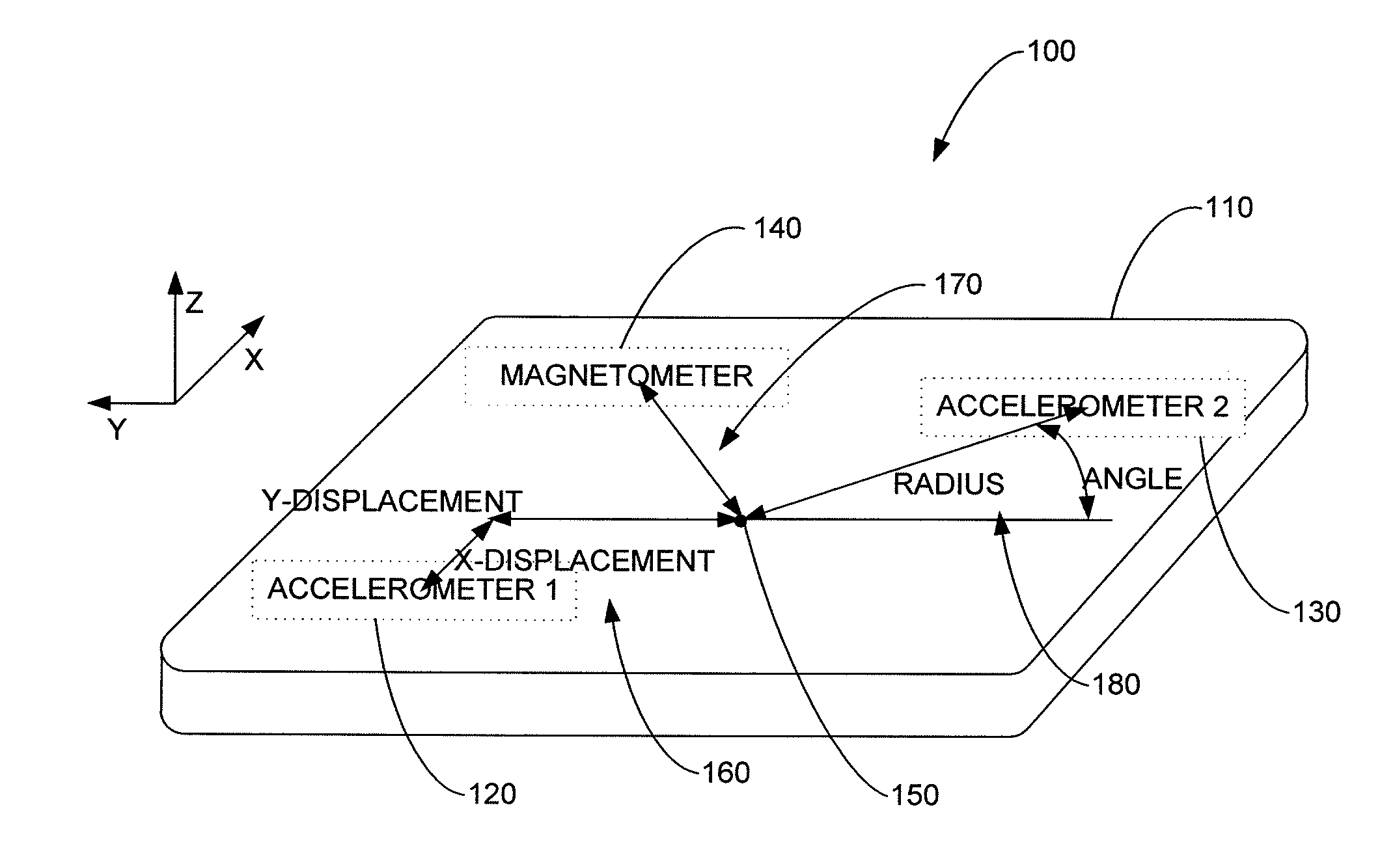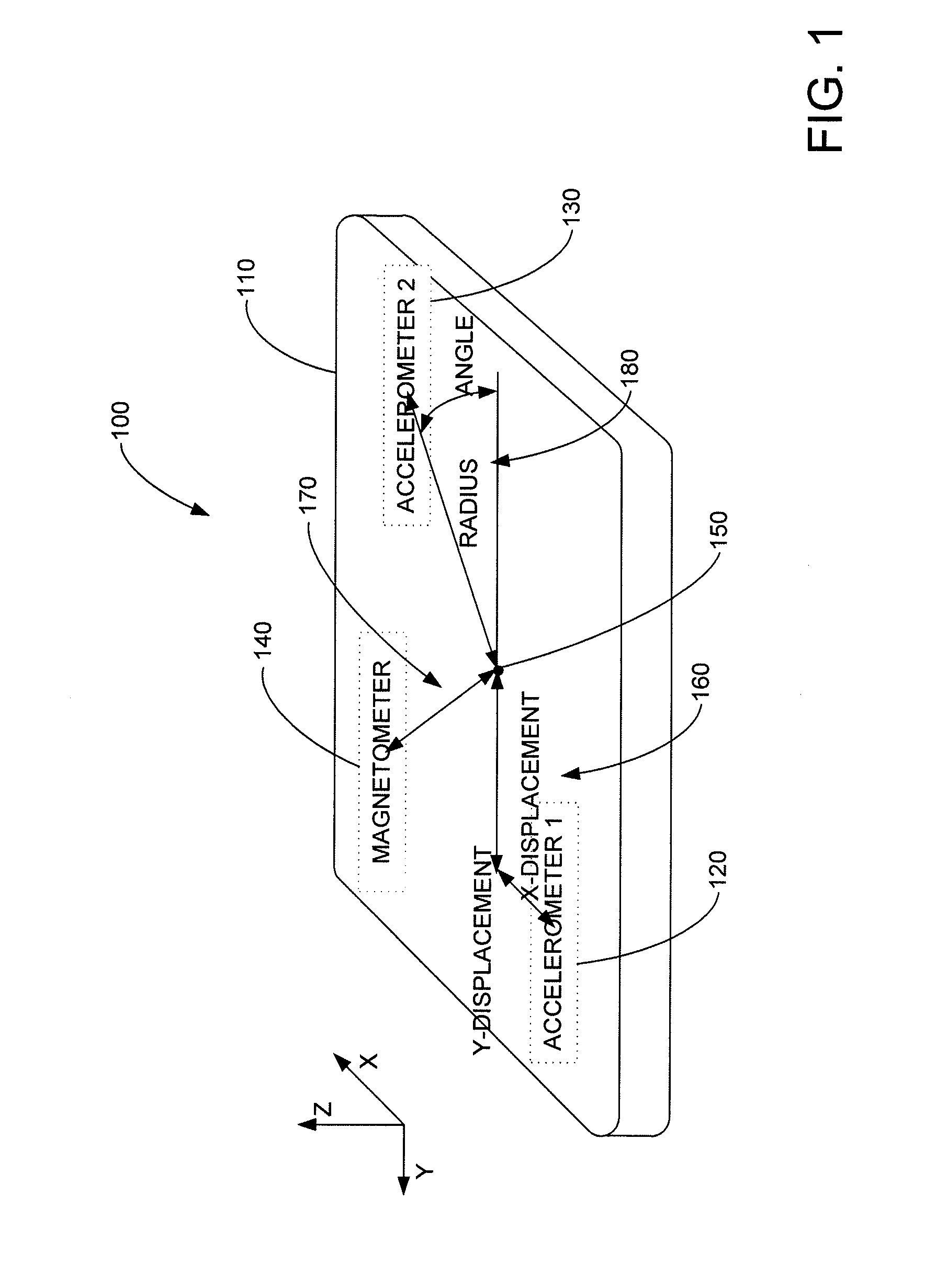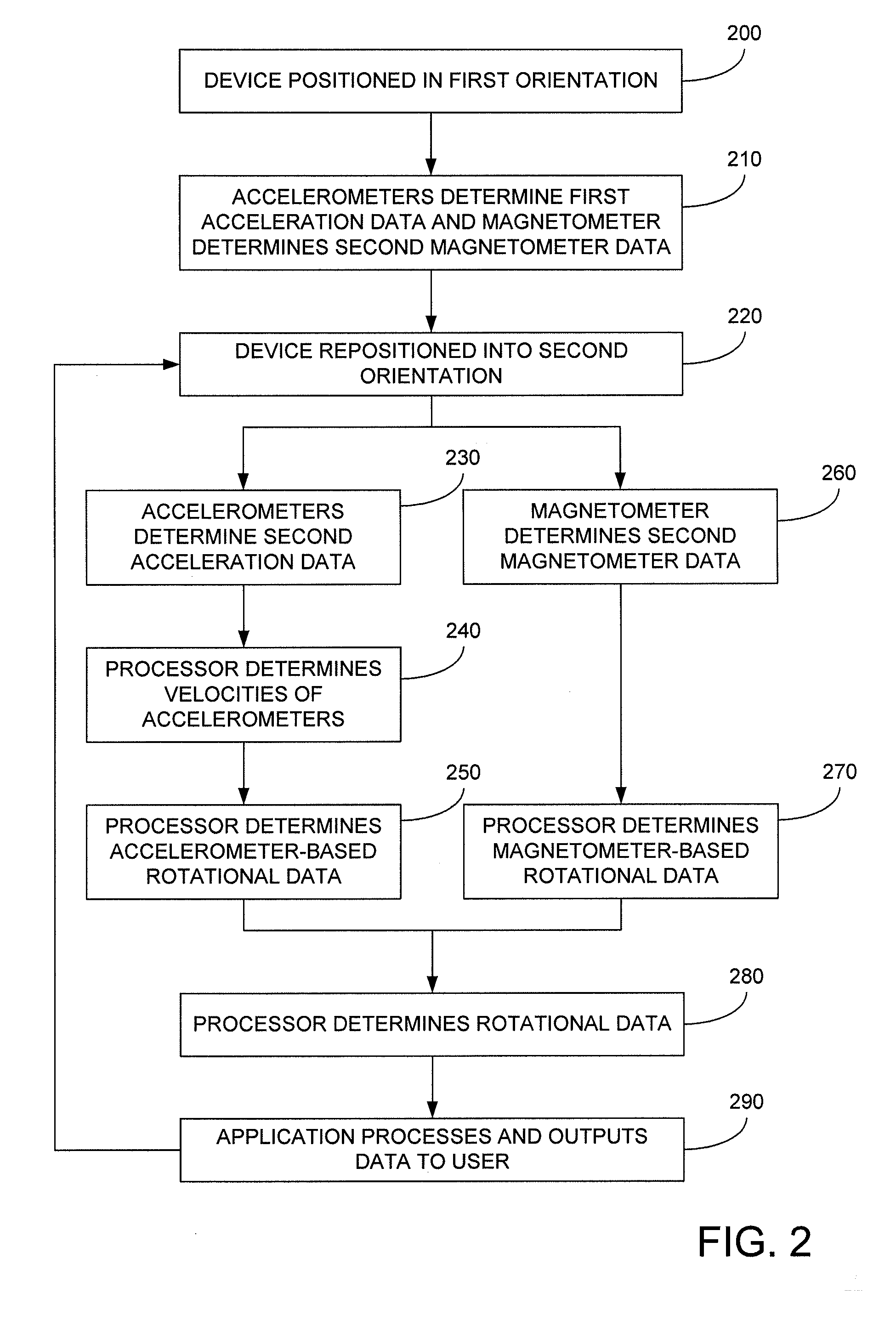Dual Accelerometer Plus Magnetometer Body Rotation Rate Sensor-Gyrometer
a magnetometer and accelerometer technology, applied in the field of smart devices, can solve the problems of gyroscopes that are often power hungry devices and require relatively large operating power, and gyroscopes are relatively expensive compared to other mems devices
- Summary
- Abstract
- Description
- Claims
- Application Information
AI Technical Summary
Benefits of technology
Problems solved by technology
Method used
Image
Examples
Embodiment Construction
[0013]FIG. 1 illustrates a functional block diagram according to various embodiments of the present invention. More specifically, FIG. 1 illustrates a device 100, e.g. smart phone, or the like, having a body 110.
[0014]Within device 100 MEMs-based accelerometers 120 and 130 and magnetometer 140 are included. As shown, a reference point 150 is identified within device 100. In some embodiments, point 150 may be a computed center-of gravity, an axis of rotation, or the like.
[0015]In various embodiments, offsets, displacements or the like 160, 170 and 180 are respectively is determined between point 150 and accelerometer 120, accelerometer 130, and magnetometer 140. In some embodiments, offsets 160, 170 and 180 may be computed during the design phase, production phase, or the like. In some embodiments, offsets 160, 170 and 180 can be stored within a memory of device 100 and used for the computations described below. In other embodiments, one or more look-up-tables may be used that receiv...
PUM
 Login to View More
Login to View More Abstract
Description
Claims
Application Information
 Login to View More
Login to View More - R&D
- Intellectual Property
- Life Sciences
- Materials
- Tech Scout
- Unparalleled Data Quality
- Higher Quality Content
- 60% Fewer Hallucinations
Browse by: Latest US Patents, China's latest patents, Technical Efficacy Thesaurus, Application Domain, Technology Topic, Popular Technical Reports.
© 2025 PatSnap. All rights reserved.Legal|Privacy policy|Modern Slavery Act Transparency Statement|Sitemap|About US| Contact US: help@patsnap.com



